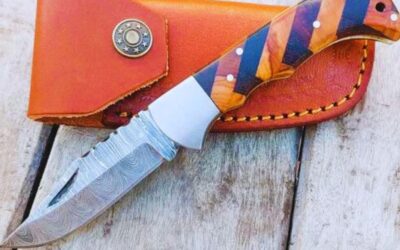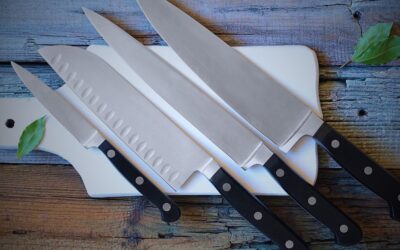Introduction to Bowie knife
So, you’re in the market for a Bowie knife? Great choice! Bowie knives are not only iconic but incredibly versatile tools. Whether you’re an outside fan, a gatherer, or somebody who essentially values a decent sharp edge, picking the ideal Bowie blade is critical. Yet, with such countless choices out there, how would you settle on the best decision? How about we make a plunge and investigate all that you want to be aware.
History of Bowie Knives
Origins and Development
The Bowie knife’s history is as legendary as the blade itself. Named after the 19th-century American frontiersman Jim Bowie, this knife was first popularized by the infamous Sandbar Fight in 1827. The original Bowie knife was crafted by James Black, a blacksmith from Arkansas. Over the years, it has evolved, but the core design remains timeless.
Famous Bowie Knife Users
Jim Bowie might be the most famous user, but many others have wielded this versatile blade. From soldiers in the American Civil War to modern-day survivalists, the Bowie knife has proven its worth time and time again.
Understanding Bowie Knife Anatomy
Blade
The blade is the heart of any knife, and Bowie knives are no exception. Typically, they feature a long, curving edge with a sharp point, perfect for both cutting and thrusting.
Handle
The handle ought to give an agreeable and secure grasp. Materials vary from wood to synthetic options, each offering unique benefits.
Guard
A crossguard is essential for preventing your hand from slipping onto the blade, ensuring safety during use.
Pommel
The pommel, or butt of the knife, can be used for striking or as a balance point, adding to the knife’s versatility.
Types of Bowie Knives
Classic Bowie Knife
These knives stick close to the original design with a fixed blade and a crossguard, making them ideal for historical enthusiasts.
Modern Bowie Knife
Modern iterations might include tactical features like serrated edges or built-in survival tools.
Tactical Bowie Knife
Designed for combat and survival situations, these knives often feature durable materials and versatile designs.
Materials and Construction
Blade Materials
High-carbon steel and stainless steel are popular choices. High-carbon steel is easy to sharpen and maintains a keen edge, while stainless steel offers superior rust resistance.
Handle Materials
Handles can be made from wood, bone, micarta, or G-10. Each material has its pros and cons in terms of durability, grip, and aesthetics.
Full Tang vs. Partial Tang
A full tang knife, where the blade extends through the handle, offers greater strength and durability compared to partial tang designs.
Blade Shapes and Their Uses
Clip Point
The clip point is the most recognizable Bowie blade shape, featuring a concave curve at the tip, ideal for precision tasks.
Drop Point
Drop points have a convex curve to the tip, making them stronger and less prone to breaking, perfect for general use.
Spear Point
Spear points are symmetrical and double-edged, suitable for thrusting and piercing.
Choosing the Right Size
Blade Length
Bowie knives typically range from 6 to 12 inches. Consider what you’ll be using the knife for when choosing the blade length.
Overall Length
The overall length affects portability and usability. A longer knife may be more cumbersome to carry but offers more reach.
Weight and Balance
The knife’s weight and balance will impact how it feels in your hand and its effectiveness for different tasks.
Intended Use
Hunting
Bowie knives are excellent for skinning and butchering game due to their large, sharp blades.
Survival
In survival situations, a Bowie knife can be a lifesaver, useful for building shelters, preparing food, and self-defense.
Everyday Carry (EDC)
While not the most practical for EDC due to their size, some smaller Bowie knives can still be carried daily for various tasks.
Collecting
Collectors appreciate Bowie knives for their historical significance and aesthetic appeal.
Legal Considerations
Knife Laws by Region
Knife laws vary widely by location. It’s essential to know the regulations in your area to avoid legal issues.
Traveling with a Bowie Knife
When traveling, especially by air, be aware of restrictions and always pack your knife in checked luggage.
Maintenance and Care
Sharpening Techniques
Regular sharpening is crucial. Use a whetstone or sharpening system to maintain a sharp edge.
Cleaning and Storage
Clean your knife after each use and store it in a dry place to prevent rust and damage.
Rust Prevention
Applying a light coat of oil to the blade can help prevent rust, especially if you’re in a humid environment.
Budget and Quality
High-End vs. Budget Knives
High-end knives offer superior materials and craftsmanship but come at a higher price. Budget knives can be a good entry point but may not last as long.
Finding Value for Money
Look for knives that offer a good balance of quality and affordability. Reading reviews and doing research can help you find the best value.
Brand Recommendations
Top Bowie Knife Brands
Brands like Buck, Ka-Bar, and Cold Steel are known for their high-quality Bowie knives.
Budget-Friendly Brands
Brands such as Schrade and Ontario offer good quality knives at more affordable prices.
Customer Reviews and Research
Importance of Reviews
Customer reviews can provide insight into a knife’s performance and durability from real users.
Where to Find Reliable Information
Websites like BladeForums, Amazon, and dedicated knife review sites are great places to start.
Personal Preferences
Aesthetics
Choose a knife that appeals to you visually. After all, you’ll be more satisfied with a knife that you find attractive.
Ergonomics
The knife should feel comfortable in your hand. Test different handles and grips to find what works best for you.
Customization Options
Some knives offer customization options like personalized engravings or custom handle materials.
Conclusion
Choosing the perfect Bowie knife involves considering many factors, from the blade material and shape to the intended use and legal considerations. By understanding these aspects, you can find a knife that suits your needs and preferences. Remember, a good Bowie knife is an investment, so take your time to choose wisely.
FAQs
What is a Bowie Knife best used for?
A Bowie knife is versatile and can be used for hunting, survival, and even everyday tasks. Its large blade makes it ideal for cutting, slicing, and even self-defense.
How do I maintain my Bowie Knife?
Regularly sharpen the blade, clean it after use, and store it in a dry place. Apply oil to prevent rust and use a protective sheath when not in use.
Are Bowie Knives legal to carry?
Knife laws vary by region, so check your local regulations. In some places, carrying a large knife like a Bowie may be restricted.
What is the best material for a Bowie Knife blade?
High-carbon steel and stainless steel are popular choices. High-carbon steel holds a sharp edge well, while stainless steel offers better rust resistance.
Can a Bowie Knife be used for self-defense?
Yes, due to its large blade and sturdy construction, a Bowie knife can be effective for self-defense. However, it’s essential to be aware of local laws regarding carrying and using knives for this purpose.



0 Comments